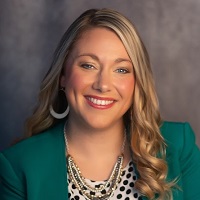From SECURE Act to SECURE 2.0: Is Your Estate Plan Safe?
The ever-evolving legislative landscape provides both challenges and opportunities when it comes to making plans for your retirement and your estate. A key focus: tax planning.


John M. Graves, Esq., IAR, Agent
The SECURE Act of 2019 brought about significant changes to Americans’ retirement and estate plans, including raising the RMD age and replacing the stretch IRA with the 10-year rule. Before the dust settled on those changes, Congress passed the second version, SECURE 2.0 Act, which will continue to put existing estate plans in question as families navigate the impact of these two booming pieces of legislation.
We are often asked, “When is the right time to start planning?” In light of these sweeping changes and the ever-evolving landscape, the time to jump in is now. However, it is not enough to simply establish a plan today and hope it will stand the test of time; rather, it is more critical than ever to surround yourself with a team of trusted professionals who can guide you through the changes as they come.
So, what exactly did the two SECURE Acts do to affect your retirement?
From just $107.88 $24.99 for Kiplinger Personal Finance
Become a smarter, better informed investor. Subscribe from just $107.88 $24.99, plus get up to 4 Special Issues

Sign up for Kiplinger’s Free Newsletters
Profit and prosper with the best of expert advice on investing, taxes, retirement, personal finance and more - straight to your e-mail.
Profit and prosper with the best of expert advice - straight to your e-mail.
Some Changes From the SECURE Act of 2019
Prior to the passage of the SECURE Act of 2019, individuals who had contributed to qualified tax-deferred retirement accounts such as 401(k)s, IRAs, 403(b)s, SEPs, SIMPLEs, etc., were required to begin taking systematic required minimum distributions (RMDs) from those accounts and pay the taxes beginning at age 70½. With the 2019 legislation, that age was raised to 72, giving individuals more time to grow their money before taking distributions. The result was also more tax dollars paid to the IRS due to the now-higher account balances.
Another significant change from SECURE Act of 2019 was the abolition of what was known as a stretch IRA, whereby an account owner could leave all accrued IRA money to their beneficiaries, who could take RMDs from the account until they passed, leaving the principal in the account for the next generation, with that pattern repeating for many generations.
A relatively modest account could eventually benefit many generations of a family by deferring taxes over many decades. However, post-2019, most beneficiaries of qualified retirement accounts are now subject to the 10-year rule. Apart from spouses and disabled or dependent children, almost all recipients of such accounts will be required to fully deplete them and pay all taxes due within 10 years of inheriting. The result of an accelerated distribution has undoubtedly been a larger portion of all accounts going to pay taxes, rather than blessing the intended recipients.
Some Changes From the SECURE 2.0 Act
Less than four years after the passage of its predecessor, the SECURE 2.0 Act came along and moved the target again. The new RMD rules increased the age from 72 to 73 until 2033, when it will be raised yet again, to age 75.
Another important change is that the penalty for missing an RMD is reduced by half. Previously, an individual who failed to take their RMD in the necessary calendar year was charged a 50% penalty in addition to the RMD amount. For example, a missed $2,000 RMD would result in being required to take an additional $1,000. That penalty under the new rule is now 25%, or $500 in the previous example. Additionally, an individual who missed the RMD but catches and remedies it within one year will face only a 10% penalty.
Prior to the SECURE 2.0 Act, qualified retirement accounts that, for whatever reason, failed to end up in the hands of the appropriate beneficiaries would escheat, or default, to the state. The new rule requires the creation of a retirement savings account lost-and-found database that beneficiaries will be able to search when their loved one passes so those funds can be claimed.
One change made by the SECURE 2.0 Act has the ability to positively impact younger generations and help set them up for retirement by allowing for the conversation of 529 savings plans for education expenses into Roth IRAs for the named beneficiary.
Not all 529 beneficiaries end up needing or using those funds for education, causing those accounts to lose value due to penalties at withdrawal. Under the new rule, any unused portion of these plans can be converted into Roth IRAs for the child or grandchild who ended up not needing the money to pay for their education.
What Does All This Mean for Your Estate Plan?
The passage of the SECURE Acts presents some challenges and some opportunities in estate planning. The 10-year rule drastically reduces the ability to transfer wealth from one generation to the next.
Families who previously established trusts to hold their IRA accounts for the purpose of stretching those accounts across generations will need to have those trusts reviewed to see if they are compliant with the SECURE Act requirements. Most will likely need to be updated to provide for distribution within the 10-year time limit now imposed on inherited non-spousal IRAs.
On the other hand, families are being given more time to grow their retirement accounts before taking distributions, which presents an opportunity to grow them faster. The reduction in penalties for missed RMDs will help those inevitably left scratching their heads at when exactly they have to start taking distributions with all the changes.
And formerly lost funds will now be more likely to end up in the intended hands through the lost-and-found database.
Younger Americans can now benefit from starting tax-free retirement in the form of Roth IRAs when they find themselves the beneficiary of unused 529 funds.
All in all, these two acts exemplify the need to incorporate tax planning into your retirement, legal and estate planning. Strategically defunding qualified accounts or converting to Roth accounts may result in a significant tax savings for families upon inheritance under the new 10-year rule. It will be important for families to consider whether such transfers will leave their assets exposed to the spend-down process relating to nursing homes. If so, then having a protective trust conservation will also be essential.
The most prudent thing is to have a legal, financial and tax professional review your existing plan to ensure you know how your specific plan will be impacted. We frequently find that families are unaware of the impact their planning will have on generations to come, so educating yourself now will help secure the peace of mind that good estate planning is designed to bring.
Profit and prosper with the best of Kiplinger's advice on investing, taxes, retirement, personal finance and much more. Delivered daily. Enter your email in the box and click Sign Me Up.

Lindsay Graves, founding partner of The Graves Law Firm, is passionate about assisting families through the challenges of the aging process to ensure dignity and financial preparedness with a comprehensive and compassionate approach. Her law firm focuses on helping clients to articulate their goals for asset preservation and long-term care and making them a reality, avoiding bankruptcy and securing wealth for loved ones. Lindsay and her team pride themselves on building and maintaining long-lasting relationships with their clients and families.
- John M. Graves, Esq., IAR, AgentOwner, G&H Financial Group
-
 I'm want to give my 3 grandkids $5K each for Christmas.
I'm want to give my 3 grandkids $5K each for Christmas.You're comfortably retired and want to give your grandkids a big Christmas check, but their parents are worried they might spend it all. We ask the pros for help.
-
 If You're Not Doing Roth Conversions, You Need to Read This
If You're Not Doing Roth Conversions, You Need to Read ThisRoth conversions and other Roth strategies can be complex, but don't dismiss these tax planning tools outright. They could really work for you and your heirs.
-
 Could Traditional Retirement Expectations Be Killing Us?
Could Traditional Retirement Expectations Be Killing Us?A retirement psychologist makes the case: A fulfilling retirement begins with a blueprint for living, rather than simply the accumulation of a large nest egg.
-
 I'm a Financial Planner: If You're Not Doing Roth Conversions, You Need to Read This
I'm a Financial Planner: If You're Not Doing Roth Conversions, You Need to Read ThisRoth conversions and other Roth strategies can be complex, but don't dismiss these tax planning tools outright. They could really work for you and your heirs.
-
 Could Traditional Retirement Expectations Be Killing Us? A Retirement Psychologist Makes the Case
Could Traditional Retirement Expectations Be Killing Us? A Retirement Psychologist Makes the CaseA retirement psychologist makes the case: A fulfilling retirement begins with a blueprint for living, rather than simply the accumulation of a large nest egg.
-
 I'm a Financial Adviser: This Is How You Can Adapt to Social Security Uncertainty
I'm a Financial Adviser: This Is How You Can Adapt to Social Security UncertaintyRather than letting the unknowns make you anxious, focus on building a flexible income strategy that can adapt to possible future Social Security changes.
-
 I'm a Financial Planner for Millionaires: Here's How to Give Your Kids Cash Gifts Without Triggering IRS Paperwork
I'm a Financial Planner for Millionaires: Here's How to Give Your Kids Cash Gifts Without Triggering IRS PaperworkMost people can gift large sums without paying tax or filing a return, especially by structuring gifts across two tax years or splitting gifts with a spouse.
-
 'Boomer Candy' Investments Might Seem Sweet, But They Can Have a Sour Aftertaste
'Boomer Candy' Investments Might Seem Sweet, But They Can Have a Sour AftertasteProducts such as index annuities, structured notes and buffered ETFs might seem appealing, but sometimes they can rob you of flexibility and trap your capital.
-
 Quick Question: Are You Planning for a 20-Year Retirement or a 30-Year Retirement?
Quick Question: Are You Planning for a 20-Year Retirement or a 30-Year Retirement?You probably should be planning for a much longer retirement than you are. To avoid running out of retirement savings, you really need to make a plan.
-
 Don't Get Caught by the Medicare Tax Torpedo: A Retirement Expert's Tips to Steer Clear
Don't Get Caught by the Medicare Tax Torpedo: A Retirement Expert's Tips to Steer ClearBetter beware, because if you go even $1 over an important income threshold, your Medicare premiums could rise exponentially due to IRMAA surcharges.
-
 I'm an Insurance Pro: Going Without Life Insurance Is Like Driving Without a Seat Belt Because You Don't Plan to Crash
I'm an Insurance Pro: Going Without Life Insurance Is Like Driving Without a Seat Belt Because You Don't Plan to CrashLife insurance is that boring-but-crucial thing you really need to get now so that your family doesn't have to launch a GoFundMe when you're gone.